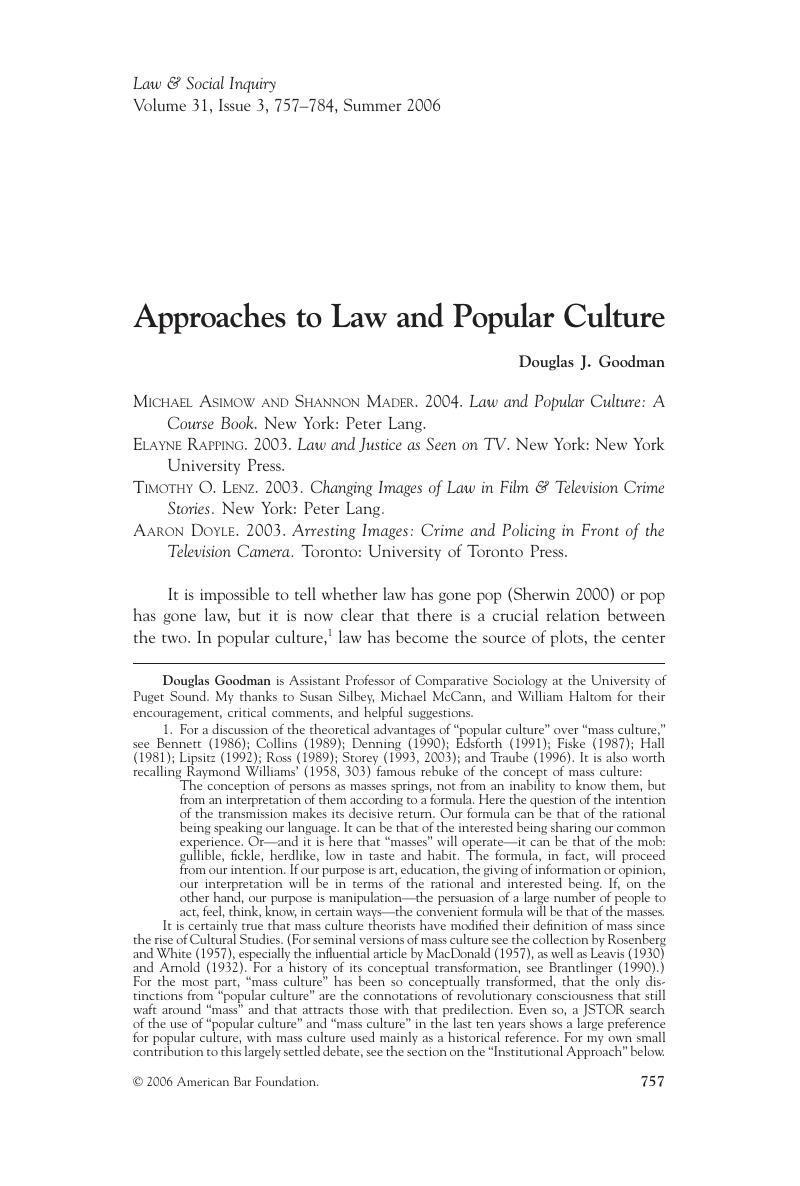Crossref Citations
This article has been cited by the following publications. This list is generated based on data provided by Crossref.
Herrmann, Gina
2008.
DOCUMENTARY'S LABOURS OF LAW: THE TELEVISION JOURNALISM OF MONTSE ARMENGOU AND RICARD BELIS.
Journal of Spanish Cultural Studies,
Vol. 9,
Issue. 2,
p.
193.
Rajkovic, Nikolas M.
2012.
‘Global law’ and governmentality: Reconceptualizing the ‘rule of law’ as rule ‘through’ law.
European Journal of International Relations,
Vol. 18,
Issue. 1,
p.
29.
Silbey, Susan S.
2018.
After Legal Consciousness.
Droit et société,
Vol. N° 100,
Issue. 3,
p.
571.
Glogar, Ondřej
2022.
Soudničky a jejich vliv na vnímání práva.
Časopis pro právní vědu a praxi,
Vol. 30,
Issue. 2,



